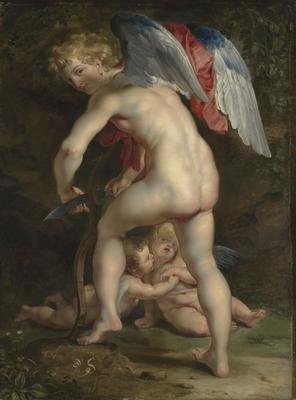Rubens challenges the old Masters
dal 22/10/2009 al 6/2/2010
Segnalato da
22/10/2009
Rubens challenges the old Masters
Alte Pinakothek, Munich
Exhibited in Munich for the first time, a selection of such works documents Rubens' treatment of his paradigms that amounted to nothing less than an artistic challenge. Simply by altering small details very slightly, Rubens often arrived at new solutions which sometimes surpassed the very work that had inspired him and lent them a surprising degree of modernity. This will be demonstrated in the exhibition by taking several examples: the juxtaposition of the original with Rubens' reinterpretation creates an exciting dialogue and provides visitors with a unique visual experience.

Ruben as a copyist? What may seem to us today as a mere reproduction with nothing of the aura of the original was regarded by Rubens as a particular artistic challenge. His oeuvre includes a large group of such derivative works, frequently of famous paintings by Titian or Raphael. Exhibited in Munich for the first time, an exquisite selection of such works documents Rubens' treatment of his paradigms that amounted to nothing less than an artistic challenge. Simply by altering small details very slightly, Rubens often arrived at new solutions which sometimes surpassed the very work that had inspired him and lent them a surprising degree of modernity.
This will be demonstrated in the exhibition by taking several examples: the juxtaposition of the original with Rubens' reinterpretation creates an exciting dialogue and provides visitors with a unique visual experience. The comparison of Titian's Adam and Eve and Rubens' copy, both in the Prado, shows this particularly clearly. Several portraits of Charles V and his son, Philip II of Spain, based on works by Titian render Rubens' close association with the Spanish court visible. They demonstrate how Rubens saw himself as the legitimate successor to this outstanding artist. A series of large-format, mythological scenes, similarly based on works by Titian, will form the absolute highlight of the exhibition.
Masterpieces from the Prado in Madrid, the Kunsthistorisches Museum in Vienna and the National Museum in Stockholm will grace the Alte Pinakothek for the duration of the exhibition and, together with the famous collection of Flemish paintings in Munich, will show the intensity of Rubens' preoccupation with Titian's work and how this effected his style.
Image: Peter Paul Rubens | Amor carves the bow, 1614, © Alte Pinakothek Munich
Opening 23 October 2009
Alte Pinakothek
Barer Straße 27, Munich
Gallery Hours
Daily except mon 10 - 18, tue 10 - 20
Closed: Mondays, Shrove Tuesday, May 1st, Christmas Eve (24.12.), Boxing Day (25.12.), New Year's Eve (31.12.)
Opened: Easter Monday (April 13th), Whit Monday (June 1st)



